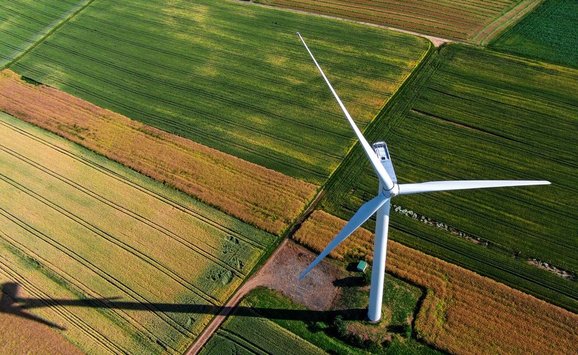With one exception, passage by Congress of the Food Security Act of 1985 was anticlimactic, given a year of acrimonious debate and front-page headlines. The bill—a restructuring of the 1981 Agriculture and Food Act—pleases few and perpetuates many flaws that caused the 1981 act to be the most expensive in history.
The exception is the environmental component, which has two main provisions. A conservation reserve will remove from production up to 45 million acres of farmland for ten years. And, through a policy called cross-compliance, farm-program benefits will be denied to farmers who convert fragile grasslands or wetlands to agricultural production after January 1, 1986, or cultivate erosive lands after January 1, 1990.
Although welcomed by those concerned about agriculture's use of natural resources, these policy instruments are not new. A conservation reserve was part of New Deal farm policy and has been reactivated many times since. cross-compliance often has been required of participants in farm programs; for example, they have had to plant grass on set-aside acreage to qualify for price supports. The difference is one of emphasis. In the new bill, conservation is justified primarily by a concern for the quality of the environment rather than by the desire to transfer income to farmers or to enhance productivity. This step beyond the production interests of the farm sector is prompted by the recognition that agricultural nonpoint, or diffuse, sources (sediment and sediment-borne fertilizer and pesticides) are major contributors to water pollution, by the active involvement of environmentalists in the farm-policy debate, and by the coincidence of farm and environmental interests.
Purposes and problems
Cross-compliance ties prescribed behavior to federal assistance. Any farmer converting grasslands ("sodbusting"), wetlands ("swampbusting"), or other fragile soils to agricultural use will be denied access to most farm programs, including price supports, Commodity Credit Corporation loans, and federal crop insurance. Exemptions are allowed for farmers using approved conservation practices.
To a remarkable extent, both farm and nonfarm communities agree that anyone receiving federal assistance should not use environmentally damaging practices. Nevertheless, cross-compliance has its problems. Many farmers cultivating erosive lands do not participate in federal programs and thus will not be affected by cross-compliance. Moreover, because tax and market incentives to convert land are not covered by cross-compliance, the amount of "nonprogram" land farmed may grow if market prices rise enough to make the benefits of cultivating fragile lands outweigh those of farm programs.
The conservation reserve is designed to maintain the nation's productive capacity, reduce soil erosion, limit off-site drainage (including sedimentation of waterways), and maintain wildlife habitat and wetlands. Participation is voluntary, with landowners submitting competitive bids to be included in the reserve. Eligibility is limited to lands considered unsuitable for farming (soil classes VI, VII, and VIII) or eroding faster than three times the natural rate of soil formation. Once a bid is accepted, the landowner may not cultivate the land for commercial purposes. The government pays an annual rent, in cash or in kind, plus half the cost of planting grasses, legumes, or trees. In most cases, grazing or haying is not allowed. To limit the economic impact of the the reserve on agribusiness, no more than 25 percent of the cropland in any county may be withdrawn from production. After the contract has expired, the owner is subject to cross-compliance, if applicable.
The conservation reserve also has important problems. It is well-suited to reducing soil erosion (and preserving productivity), but it may not be the best way to solve water quality problems, given the poor state of knowledge about sediment transport. And the emphasis on cropland controls to improve water quality may be too limiting in light of the major contribution to water pollution of runoff from range, pasture, forestland, and urban areas.
There also is a fundamental question concerning the program's emphasis on soil erosion. To economists, the off-farm effects of erosion are more of a problem than those on the farm: a landowner has monetary incentives to protect the productivity of the land, to preserve its value, but does not bear directly the costs of off-farm pollution. This does not mean farmers necessarily ignore environmental quality. It is purely a problem of greater incentives to limit specific private costs (productivity loss) compared with diffuse social costs (pollution and damaged wildlife habitats).
Repeating history
Striking similarities mark the farm bill's conservation component, soil conservation legislation of the 1930s, and the Soil Bank Program of 1956. As in the 1980s, farmers in the 1930s suffered falling product and asset prices and chronic surpluses caused by overproduction and world economic recession. Environmental concern, spurred by the dust bowl, led to programs that supported farmers' income, cut production, and reduced soil erosion.
The Soil Conservation Service was established in 1935 to give technical and financial assistance to farmers seeking to preserve their soil. In addition, the Soil Conservation and Domestic Allotment Act of 1936 authorized government payments to farmers to shift production from soil-depleting to soil-conserving uses—generally grasses and legumes. Although soil conservation was the stated goal of these programs, the results typically enhanced productivity. The Soil Bank contained both an acreage reserve and a conservation reserve, with the former paying farmers to divert land in surplus crops (cotton, corn, wheat, tobacco, peanuts, and rice) to conservation uses. The acreage reserve was in effect only three years, yet in 1957, for example, the program took 21.4 million acres out of production. The conservation reserve diverted land to conserving uses for a longer period. Contracts were initiated between 1956 and 1960, with the last expiring in 1972. Participants received annual rent and subsidies for soil-conserving investment. At the height of the program in 1961, 28.7 million acres were enrolled. About half of the conservation reserve land, however, was diverted from non-depleting uses, such as using land for growing hay and for pasture.
Judging the programs
A conservation reserve coupled with cross-compliance is only one of many ways of addressing soil erosion and environmental quality. Current policies include technical assistance, cost sharing, and voluntary "best management practices" per section 208 of the Clean Water Act. The alternatives encompass traditional point-source measures, such as environmental-quality standards and regulation of emissions, as well as nontraditional policies like emissions taxes and tradable pollution "rights." How does the current legislation compare with the alternatives?
Peter Bohm of the University of Stockholm and Clifford S. Russell recommend six useful criteria for assessing an environmental policy. These criteria are listed in the following section and are used in evaluating the newly adopted programs.
Static efficiency
This is the ability to reach goals at minimum cost. The conservation reserve appears to be a relatively efficient method of reducing soil erosion and improving wildlife habitat, although it carries a fairly high price tag: the Department of Agriculture conservatively estimated a cost of $5 billion for the first five years. When viewed as part of an entire farm program, however, the reserve will be less expensive if production is reduced enough to raise market prices and lower federal deficiency payments.
The reserve's ability to meet water quality goals is less certain. RFF's Leonard Gianessi, Henry Peskin, and Pierre Crosson recently completed a study concluding that restrictions on emissions from croplands alone will not be sufficient to meet federal water quality standards. Moreover, they suggest that direct control of sediment entering waterways—settling ponds, for example—may be more cost-effective than cropland controls.
Many of the erosive acres converted during the boom period of the seventies will drop out of production if farm prices remain low. Without the reserve, however, there is no assurance that this land will be managed to reduce erosion and provide wildlife habitat.
Information intensity
This term refers to the amount of information the regulating authority needs to design optimal contracts for each participant. Given multiple objectives, assembling enough information will be difficult. To begin with, the relation between erosion and soil productivity is a matter of scientific controversy. But the off-farm effects of pollution and the values of habitats, wetlands, and forests—termed nonmarket values by economists—present even more of a problem. To evaluate a bid properly, the government will have to compare dollar cost (the bid) against nonmarket goods that generally are not thought of in dollar terms. Economists have developed ways to evaluate nonmarket goods, but in practice the techniques are difficult to implement and subject to wide margins of error and disagreement.
Perhaps the following is a workable plan for administering the conservation reserve. At the federal level, the budget could be divided among regions using the estimated contribution of each to soil erosion, water pollution, and the environmental value of land taken out of production. The Soil Conservation Service would classify land according to productivity and erosivity (which has almost been accomplished for all of the United States). Then, in conjunction with hydrologists, economists, and ecologists, cropland in each region also could be ranked—high, average, and low priority—according to its estimated value as habitat and its contribution to sediment pollution. Bids then would be ordered inversely by cost for a given level of performance and accepted up to funding limits. Although it would not be easy to weight each objective, this plan optimally would allocate limited funds while giving landowners an incentive to discount their bids.
Ease of monitoring and enforcement
The reserve receives high marks on this criterion. Nonpoint pollution is extremely difficult to control because the sources are dispersed. The conservation reserve avoids this problem by specifying cultural practices that can be checked by field visits or aerial photography. Compare this with direct regulation or taxation of the sediment leaving a field—an expensive, if not impossible, task. Landowners violating their contracts are required to forfeit all rental payments received plus interest.
Flexibility in the face of economic change
The nature of the farm sector, the volatile world demand for food, and the imperfect but growing knowledge of the relation between erosion and water pollution argue for enough room to adjust as economic conditions change and new information emerges. As we learn more about how effectively the conservation reserve meets soil erosion and environmental goals, it will be necessary to change the total acreage and the distribution of land among regions and within a district. Efficiency will be greatest if the regulator is able to adjust the program without requiring new legislation. (This interpretation of flexibility differs from that of Bohm and Russell, who define it as the ability of regulated actors to adjust to a changing economic environment without direct intervention by the regulator.)
Some flexibility is designed into the reserve. The secretary of agriculture may cancel contracts during a national emergency or allow haying and grazing if economic conditions warrant. Contracts may be altered or cancelled "in the public interest," or if the landowner pays back all government payments, plus interest.
Dynamic incentives
Two kinds of incentives are involved: those to adopt more efficient technologies, and those to shift production to regions with lower environmental costs. If funds are properly targeted to regions with the greatest environmental problems, production will shift to regions with lower environmental costs, thus improving efficiency. Cross-compliance discourages producers from cultivating fragile lands and encourages approved conservation practices. If these practices reflect the most efficient technology, the first goal will be met. Unfortunately, no private incentives exist to ensure this result.
Political considerations
The conservation reserve and cross-compliance have demonstrated their political acceptability, giving them an advantage over most alternatives. Unfortunately, this is not the only relevant concern. The way the programs are carried out will determine their success in meeting environmental goals, and two factors weigh heavily against them. The first is the regional distribution of benefits and costs. According to a 1980 assessment, 90 percent of the cropland having "excess" soil erosion occupies only 10 percent of the total acreage and is concentrated in the Corn Belt, the Palouse area of the Pacific Northwest, the Southeast, and the Mississippi basin. For the sake of efficiency, the conservation reserve should focus on these areas. But soil conservation monies have been dispensed from a political pork barrel and allocated fairly evenly among conservation districts. The Soil Conservation Service recently has attempted to target areas with the greatest erosion problems, but this was possible because targeting supplemented—not replaced—standard programs; vested interests were not disturbed. The conservation reserve administrators will have a difficult time overcoming regional competition for funds.
The second problem is inertia within soil conservation agencies. The Soil Conservation Service for fifty years has carried out a legislative mandate to promote soil conservation and production enhancement. It may be hard to reorient it to include improving water quality and preserving wetlands and wildlife habitat. Regardless, the Service's cooperation is instrumental to the success of the conservation reserve because of its highly developed network of field offices and close ties to the farming community.
Conservation, not income support
Finally, these programs should be used for their stated purposes and not as all-purpose farm problem-solvers. For example, section 1318 of the bill allows the secretary of agriculture to buy conservation easements from farmers defaulting on Farmers Home Administration loans. If a financially stressed farmer owns land meeting the criteria of the conservation reserve, this presents no problems. However, attempts to redirect the reserve solving current crises in farming will doom it to becoming another thinly disguised income subsidy. Continued representation of the public interest in the design and implementation of the conservation reserve will be essential to prevent this from happening.
Cross-compliance and the conservation reserve have been hailed as historic approaches to conserving natural resources used in agriculture and improving the quality of the environment. As noted, however, they are not new, nor are they without visible flaws, let alone the unperceived problems the future almost certainly will reveal. But the programs are potentially large steps in the right direction. In contrast with some other parts of the farm bill, this is no mean accomplishment.

Tim T. Phipps is a fellow in RFFs National Center for Food and Agriculture Policy.





